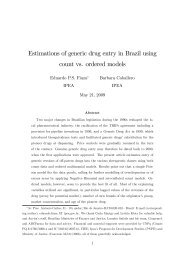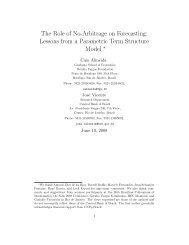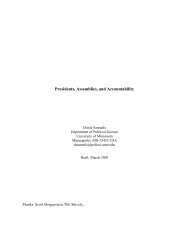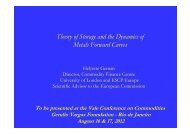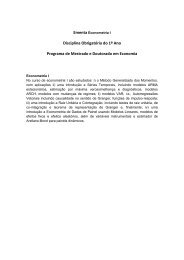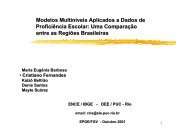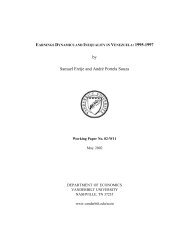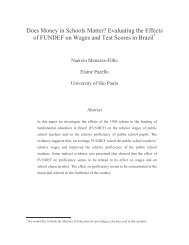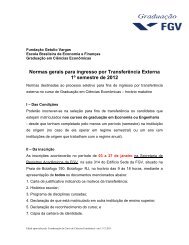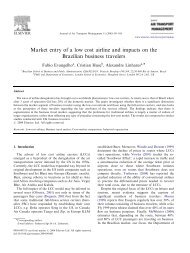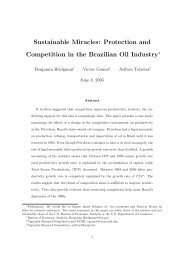Dynamic Hedging with Stochastic Differential Utility
Dynamic Hedging with Stochastic Differential Utility
Dynamic Hedging with Stochastic Differential Utility
You also want an ePaper? Increase the reach of your titles
YUMPU automatically turns print PDFs into web optimized ePapers that Google loves.
of the wealth or because the margin account, R increases as in the standard<br />
case. Furthermore, notice that the SDU utility adds a penalty through the<br />
presence of the additional term in the numerator: If the curvature of the<br />
value function increases, both numerator and denominator increase, making<br />
the net effect unknown (in the standard case, risk aversion would decrease.)<br />
The sign of R does not change under SDU. In short, the global net effect<br />
is that the extended risk aversion increases because of the presence of the<br />
mentioned term in the denominator. This is, of course, an implication from<br />
Proposition 6 (Comparative Risk Aversion) in Duffie and Epstein (1992).<br />
With this in mind, Duffie (1989) arguably calls the first term between<br />
brackets in equation 7 as the pure hedge demand, andthesecondtermas<br />
the pure speculative demand 15 . The term pure hedge demand comes from a<br />
uniperiod model, where we want only to minimize risks, that is, we minimize<br />
the variance of our position, <strong>with</strong>out preoccupations <strong>with</strong> the return. In this<br />
case, θ t =(υ t υ 0 t) −1 υ t σ 0 tπ t (see additional discussion in Section 4.1).<br />
Ifthespotcommitmentiszeroattimet, the hedger may still be willing to<br />
buy futures through the pure speculative demand term. This also would be so<br />
if covariance between spot and futures prices were null - υ t is orthogonal to σ t<br />
-, meaning that futures contracts do not provide any protection against spot<br />
price fluctuations 16 . Also, if the covariance between futures and spot prices<br />
increases in absolute value, one increases the position under hedge, since the<br />
role of protecting against undesirable fluctuation in prices increases.<br />
15 Adler and Detemple (1988) call them, respectively, as the Merton/Breeden informationally<br />
based hedging component, and as the mean-variance component.<br />
16 Here we are not taking into account equilibrium concerns.<br />
12




